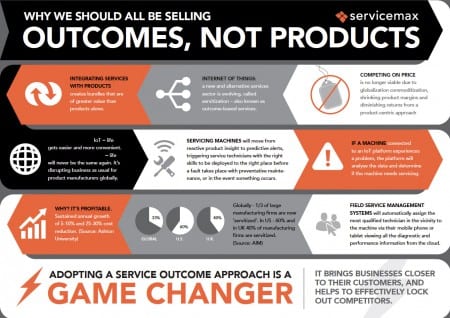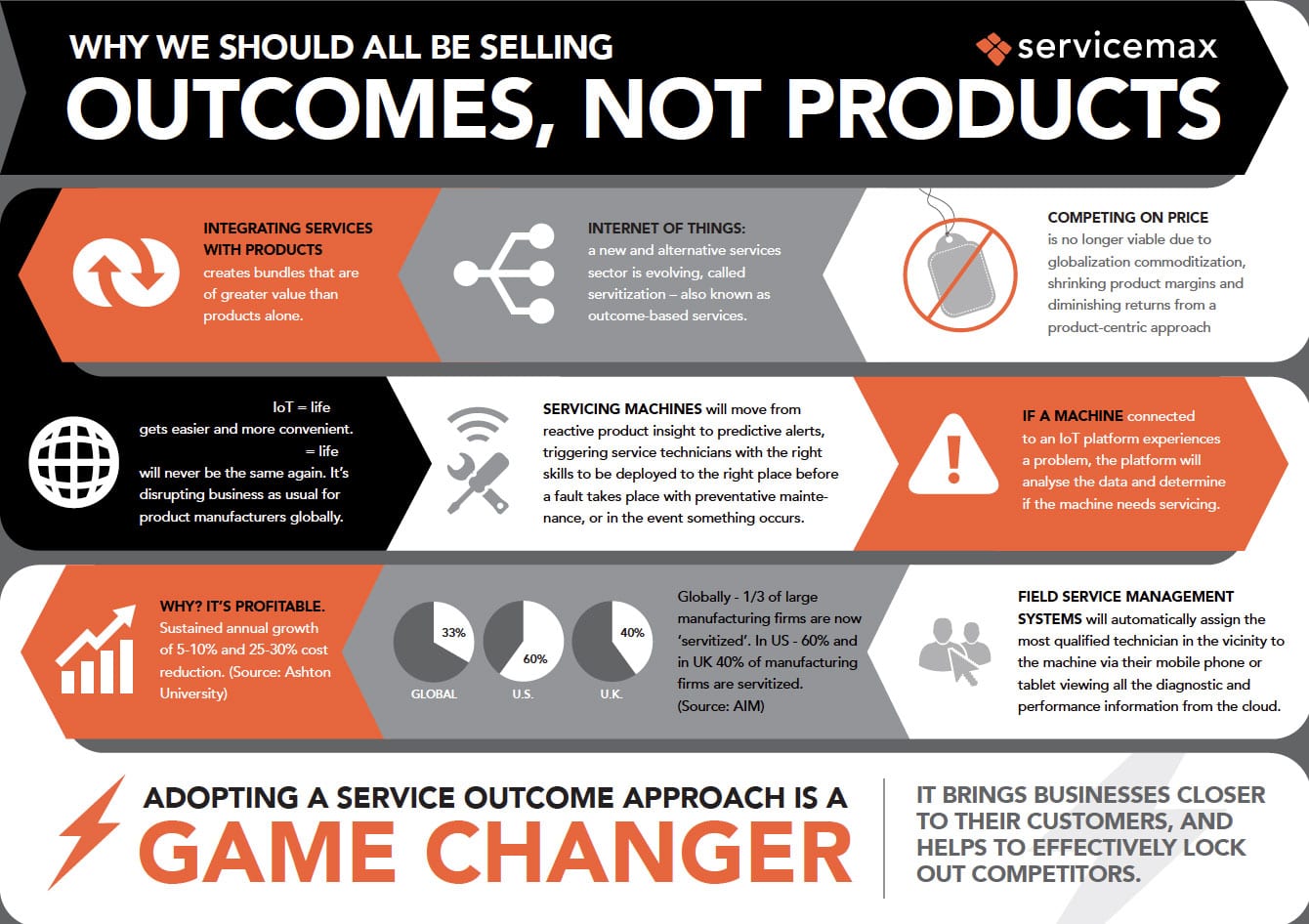It’s no secret that an increase in connectivity and mobility is shaking up the way business is done across industries. In field service for instance, companies are tapping into the latest in mobile, cloud, wearable and Internet of Things technology to better serve their growing customer bases and arm their field technicians with optimized data needed to better fix assets. This shift creates possibilities for new field service business models that focus on selling the outcomes of field service to customers, rather than selling the products one-off. The phenomenon is called servitization and we think it will propel service-reliant industries into the connected future.  Here are five reasons why we believe businesses of any size should consider moving to outcomes-based models of field service to lead the next phase of industry innovation.
Here are five reasons why we believe businesses of any size should consider moving to outcomes-based models of field service to lead the next phase of industry innovation.
- Model is Industry-Tested, Globally Approved: According to AIM Consulting, ⅓ of global manufacturing firms are servitized. In the United States, 60% of manufacturing firms are servitized while 40% of U.K.-based manufacturing firms have moved to primarily selling outcomes versus products. While manufacturing is a natural fit for the outcomes model, we see it emerging across industries as a technology-driven alternative to traditional selling methods.
- Investment in Customer Success Yields Business Success: Companies that offer an outcomes-based model of service promise their customers to proactively service products. According to researchers at Ashton University, companies that move to the servitization model experience sustained annual growth of 5-10% and can realize a 25-30% cost reduction. By signing a contract that offers an outcome (ex. flight hours vs. engine parts), customers can minimize costs associated with product downtime, strengthen field service operations and focus on growing other areas of their business.
- Quality Becomes Synonymous with Field Service: Customers that subscribe to an outcomes-based model of field service raise their expectations of results from that service. Field service organizations are held to a higher standard because they are on an active retainer and must consistently deliver great results. Connecting assets and technicians through the latest technology (mobile, wearables, the IoT) is key to sustaining the highest levels of customer satisfaction and service today, and will remain so moving forward.
- Competitors Can Be Taken Out of the Equation: Moving to an outcomes-based model of service bonds providers and customers in a way that significantly increases the level of trust and partnership. The outcomes-based transaction can last years instead of the traditional one-off or ad hoc service organization/customer relationship. This tighter bond shines a brighter light on the importance of field service organizations meeting and exceeding customer expectations.
- People and Technology Connect to Unlock Consistent Results: Connecting products, machines and assets to the IoT via sensors or cloud technology enables service providers to collect data that can completely diagnose a problem before it becomes mission critical. Field service agents can access and analyze that data and pull insights to address the issue with optimal knowledge and the right parts. Servitization and the IoT are complementary, and when used in tandem, have the potential to yield a fundamental shift in response time and first trip success.
The field service industry is poised to fundamentally transform the way companies do business and the level of quality customers expect from their service providers. Stay ahead of the curve and start thinking about moving to an outcomes-based model of service today.


This is right on the money. Up until now, getting good and cost-effective operational data through operational analytics has been difficult. That is no longer the case! Traditionally, services performed have only “implied” assurance of maintaining original design operating performance. I am struggling to get my organization to stop focusing on hours, schedules and truck rolls, and start to find out the real root of why customers will need services in the future.